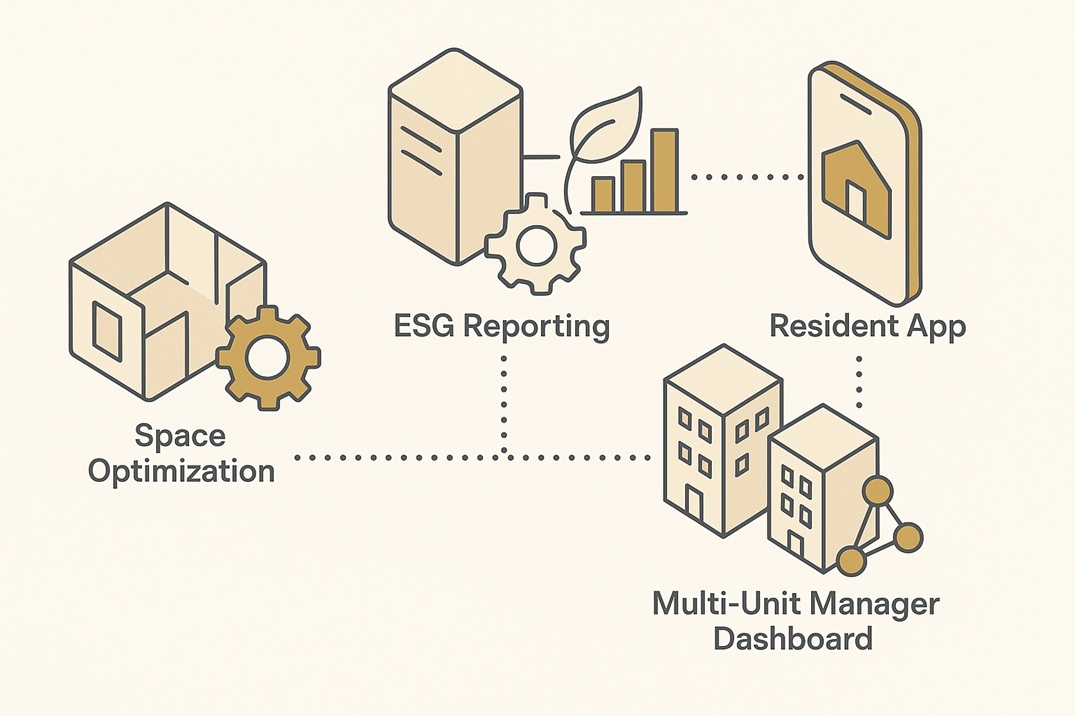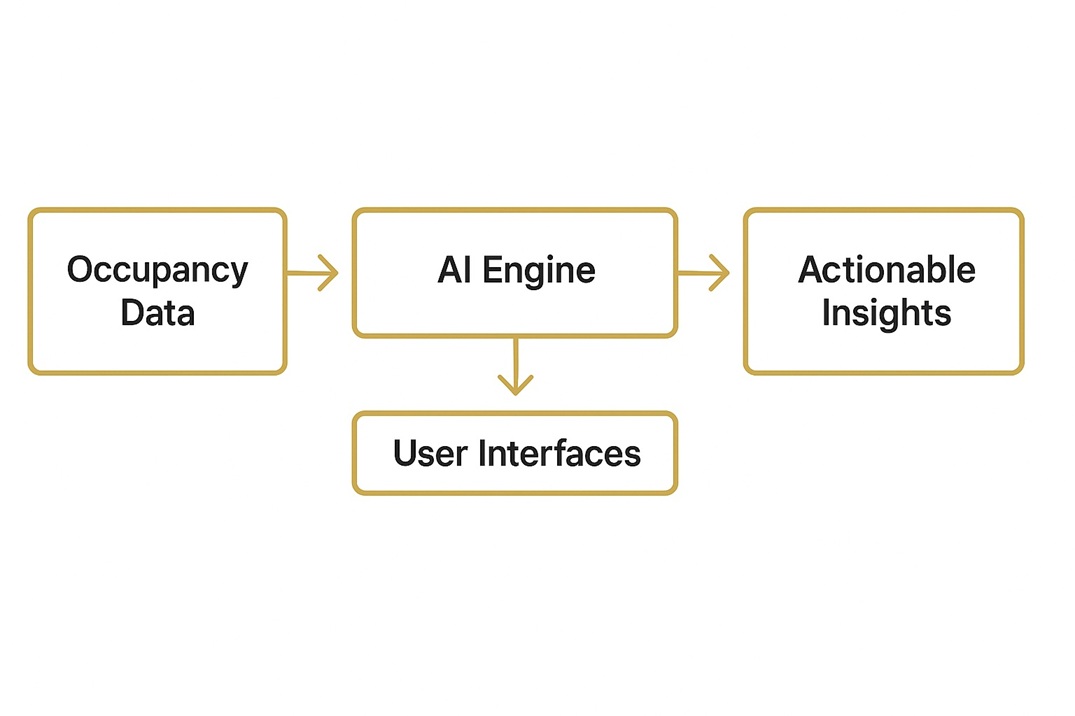Solution Overview
Integrated AI-Powered Solutions for Smarter Residential Living

In today’s residential environments, building managers and residents alike face compounding challenges—from inefficient energy use and escalating utility costs to poor visibility into occupancy trends and limited control over daily operations. Traditional systems operate in silos, with fragmented tools for energy tracking, space planning, and tenant engagement—leading to data loss, duplicated efforts, and suboptimal outcomes. AI Home Optimizer solves this fragmentation by integrating space optimization, ESG reporting, and resident interaction into a unified, intelligent platform. Powered by real-time occupancy data and advanced analytics, our modular system enables coordinated decision-making, adaptive automation, and meaningful sustainability impact across every unit and building.

Space Optimization

ESG Reporting Dashboard

Resident App

AI Home Optimizer transforms raw occupancy data into intelligent action through a centralized AI engine. This engine continuously processes real-time sensor inputs to generate predictive insights, which are then delivered through purpose-built interfaces—for managers, residents, and ESG stakeholders—ensuring fast, informed, and measurable decisions across your property.
Why an Integrated Solution Matters
Streamlined operations across multiple units
A unified platform ensures consistency, reduces redundancy, and simplifies building-wide coordination.Centralized control for property managers
Gain oversight of all systems—occupancy, energy, and resident services—from one intuitive dashboard.Automated ESG compliance and reporting
Meet regulatory and sustainability standards effortlessly with real-time data and prebuilt templates.Enhanced engagement with residents
Deliver personalized insights, recommendations, and control via the Resident App for a smarter living experience.Long-term savings through predictive intelligence
AI-powered analytics anticipate trends, reduce energy waste, and optimize asset usage over time.

